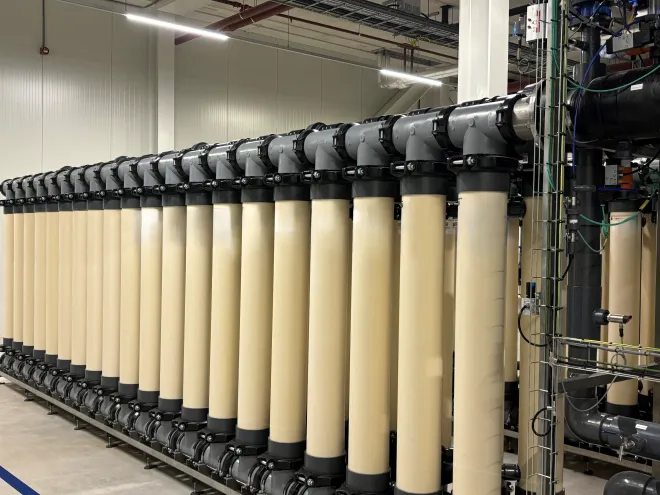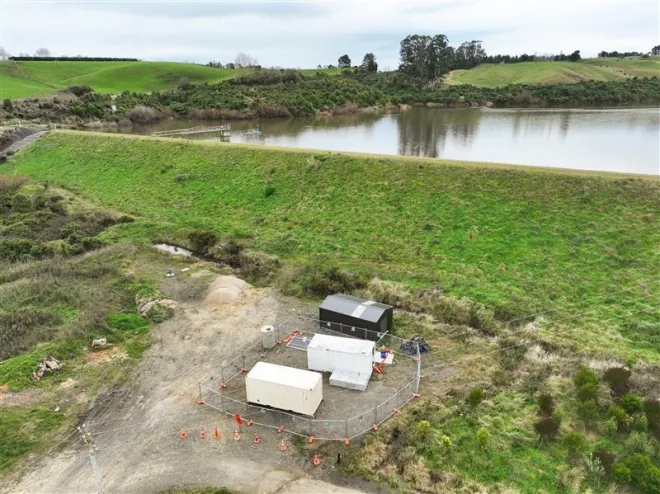New trial treatment plant for Marton Water Strategy
A new trial treatment plant for Marton’s drinking water is being set up at the Tūtaenui Reservoir Bore this week, a key milestone in the complex process to improve Marton’s water quality.
July 09, 2025
Marton has struggled with water quality since the town was first founded, due to high levels of manganese (a common mineral) and geosmin (produced by algae) in its surrounding water. Rangitīkei District Council has drilled a new bore to improve the quality of Marton’s water, but needs to finalise how it will be safely treated before it flows into community taps.
Council staff say that they had hoped to have the trial plant in place earlier this year, but it had taken longer than expected to finalise testing on the existing Tūtaenui bore water. The final treatment solution will have to be able to treat a blend of the new bore at the Marton Dams and the existing Tūtaenui bore.
“When we reviewed the options that are in place around New Zealand, there are often significant drawbacks or regular issues that other councils have to deal with,” says Rangitīkei District Council Assets and Infrastructure Group Manager, Arno Benadie. “For example, needing to treat water with large doses of chemicals, handling toxic byproducts, or just being quite expensive to maintain. The system we’re trialling has the potential to deliver really strong results and provide the consistency that Marton’s water supply has lacked over the years.”
The direct nanofiltration system uses nanofiltration membranes to remove unwanted chemicals, hardness and pathogens from water in one pass. Its design is energy-efficient and low-waste.
“It’s really innovative,” says Peter Leitch, Managing Director for Guaranteed Flow Systems, the contractors involved in this project. “The membrane process is already well-proven overseas in water bottling and industrial reuse plants, and we’re excited that this is the first municipal drinking-water trial in New Zealand. By pairing this accepted technology with innovative engineering, the Marton plant is aiming to drop its energy and chemical use to industry-leading lows.”
The Council is upfront that this new system won’t be fully operational in time for the upcoming spring and summer season. “Finding the right technology for Marton’s water, which needs to balance affordability with efficient performance and longevity, has been a challenge,” says Benadie. “It’s been years of testing and learning - progress hasn’t stopped, but it’s taken more time to get right than we aimed for.
“We know the delays have been frustrating for our community, but we want to do this once, and do it well. We’re really excited about what we’re seeing in this next-gen technology, and we want Marton to benefit from it.”
The trial plant will need a week to get set up. Once running, it will begin in-depth testing for 8-12 weeks. “The testing period is a vital step in this process. It will give us greater knowledge on how to optimise the system, and confidence that it will work with Marton’s water and deliver what we are expecting.”
Council staff are working now on practical measures to support Martonians over spring and summer, and will be sharing updates in the coming months.
“This project is progressing as a matter of urgency,” says Benadie. “We want to make sure that Marton's new water system delivers what residents deserve and expect from their drinking water.”
More information is available on our project page:

This is an example of what a direct nanofiltration system looks like. The water is passed through membranes like these to remove unwanted minerals.

Once the Marton Water Strategy is completed, the Tūtaenui Reservoir (rear) will no longer be required as the town's supply will come from two bores. The trial treatment plant has now been located to the Tūtaenui Reservoir so that testing on the bore there can begin.
